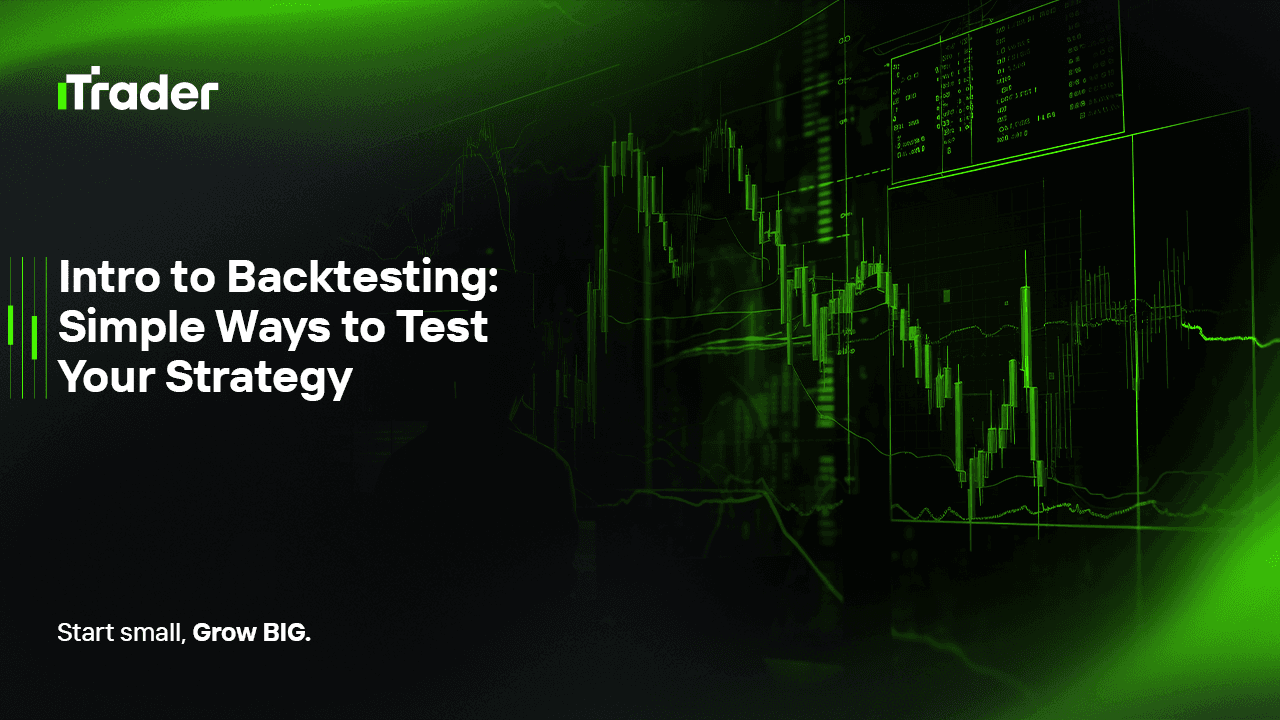2025-09-15
For many traders, the idea of testing a trading strategy feels overwhelming—especially if you’re preparing for a prop firm evaluation where performance rules are strict. But here’s the truth: you don’t need to be a quantitative finance PhD or own expensive software to start validating your ideas. What you need is a structured process to see how your strategy would have performed in real markets. That’s where backtesting comes in.

Backtesting is the process of applying your trading rules to historical market data to see how they would have performed in the past. It’s not about predicting the future with certainty—it’s about checking whether your strategy is robust enough to survive different market conditions.
In the context of prop trading, backtesting plays an even more critical role because:
Imagine walking into a prop firm challenge with a strategy you’ve never tested. You wouldn’t know:
Backtesting answers these questions before real money—or your funded account—is on the line.
The main benefits are:
Backtesting doesn’t have to be complicated. Here are three simple methods any prop trader can use:
This is the most basic approach. You scroll through historical charts and mark where you would enter, set stop loss, and take profit.
Here you use built-in strategy testers inside trading platforms.
If your strategy is rule-based, you can download historical data (OHLC prices), set your rules in Excel or Google Sheets, and let formulas calculate trade outcomes.
When you backtest, don’t just focus on profits. Prop firms care about risk management. Make sure you track:
Many beginner traders sabotage their backtesting results by falling into traps:
Once you’ve tested your strategy, the next step is adapting it for the specific rules of your prop firm challenge. Ask yourself:
Remember: a strategy that looks profitable on paper might still break prop firm rules if you don’t account for risk limits.
Backtesting isn’t about creating a “perfect system.” It’s about filtering out bad ideas and strengthening good ones before you risk real capital. For prop traders, this means entering challenges with a clear, tested, and disciplined plan.
If you keep your backtesting simple, focus on core metrics, and avoid common biases, you’ll build the confidence and discipline needed to perform under the strict conditions of a prop firm evaluation.
© 2025 iTrader Global Limited | หมายเลขทะเบียนบริษัท: 15962
iTrader Global Limited ตั้งอยู่ที่ Hamchako, Mutsamudu, เกาะปกครองตนเอง Anjouan, สหภาพคอโมโรส และได้รับใบอนุญาตและอยู่ภายใต้การกำกับดูแลของคณะกรรมการหลักทรัพย์แห่งคอโมโรส ภายใต้หมายเลขใบอนุญาต L15962/ITGL
iTrader Global Limited ดำเนินการภายใต้ชื่อทางการค้า “iTrader” และได้รับอนุญาตให้ดำเนินกิจกรรมการซื้อขายฟอเร็กซ์ โลโก้ เครื่องหมายการค้า และเว็บไซต์ของบริษัทเป็นทรัพย์สินเฉพาะของ iTrader Global Limited
บริษัทย่อยอื่น ๆ ของ iTrader Global Limited ได้แก่ iTrader Global Pty Ltd หมายเลขทะเบียนบริษัทออสเตรเลีย (ACN): 686 857 198 โดยบริษัทนี้เป็นตัวแทนที่ได้รับอนุญาต (หมายเลขตัวแทนบริการทางการเงินของออสเตรเลีย (AFS): 001315037) ของ Opheleo Holdings Pty Ltd (ใบอนุญาตบริการทางการเงินของออสเตรเลีย (AFSL): 000224485) ซึ่งมีที่อยู่จดทะเบียนอยู่ที่ Level 1, 256 Rundle St, Adelaide, SA 5000 ข้อจำกัดความรับผิดชอบ: นิติบุคคลนี้ไม่ใช่ผู้ออก และไม่รับผิดชอบต่อผลิตภัณฑ์ทางการเงินที่ซื้อขายบนหรือผ่านเว็บไซต์นี้
คำเตือนความเสี่ยง: การซื้อขาย CFD มีความเสี่ยงสูงต่อการสูญเสียเงินทุนอย่างรวดเร็วเนื่องจากเลเวอเรจ และอาจไม่เหมาะสมกับผู้ใช้ทุกคน
การซื้อขายกองทุน CFD และผลิตภัณฑ์ที่มีเลเวอเรจสูงอื่น ๆ ต้องการความรู้เฉพาะทาง
จากผลการวิจัยพบว่า 84.01% ของผู้เทรดที่ใช้เลเวอเรจประสบกับการขาดทุน
โปรดตรวจสอบให้แน่ใจว่าคุณเข้าใจความเสี่ยงทั้งหมด และพร้อมที่จะสูญเสียเงินทุนก่อนที่คุณจะเข้าร่วมการซื้อขายที่มีเลเวอเรจ
iTrader ขอประกาศว่า บริษัทจะไม่รับผิดชอบต่อความเสี่ยง ความเสียหาย หรือการสูญเสียใด ๆ ที่เกิดขึ้นจากการซื้อขายแบบมีเลเวอเรจต่อบุคคลหรือนิติบุคคลใด ๆ ทั้งสิ้น
ข่าวสารและข้อมูลที่ปรากฏบนเว็บไซต์นี้มีไว้เพื่อวัตถุประสงค์ทางการศึกษาเท่านั้น ผู้ใช้ควรตัดสินใจทางการเงินอย่างอิสระและโดยใช้ข้อมูลอย่างรอบคอบ
ข้อจำกัด: iTrader ไม่ได้มุ่งเป้าเว็บไซต์หรือบริการไปยังผู้อยู่อาศัยในประเทศที่กฎหมายหรือข้อบังคับห้ามไม่ให้มีการทำธุรกรรมดังกล่าว
หากคุณอาศัยอยู่ในเขตอำนาจที่การใช้เว็บไซต์หรือบริการนี้ถูกจำกัด คุณต้องรับผิดชอบในการปฏิบัติตามกฎหมายท้องถิ่น
iTrader ไม่รับประกันว่าเนื้อหาบนเว็บไซต์ของบริษัทจะเหมาะสมหรือถูกต้องตามกฎหมายในทุกพื้นที่